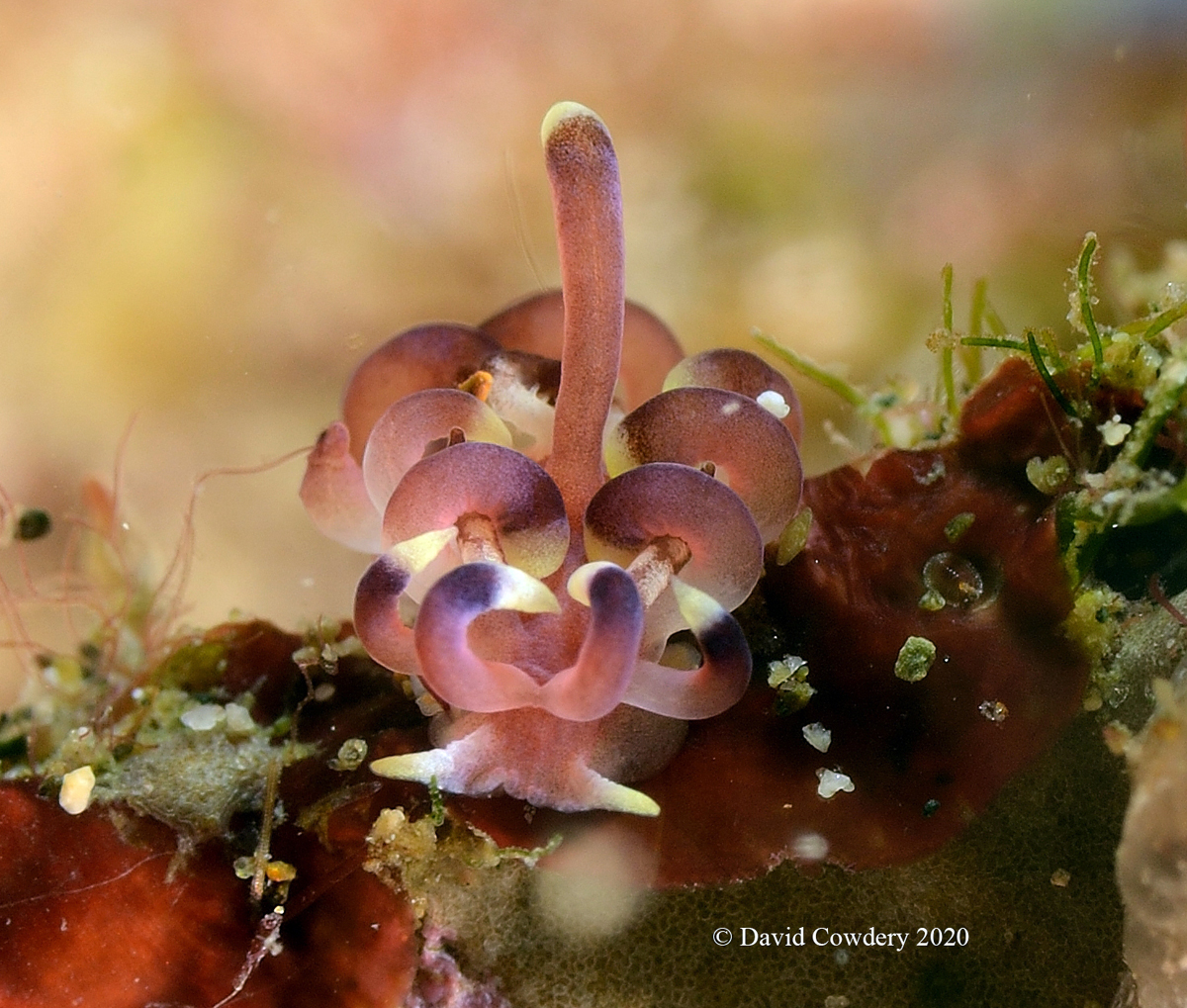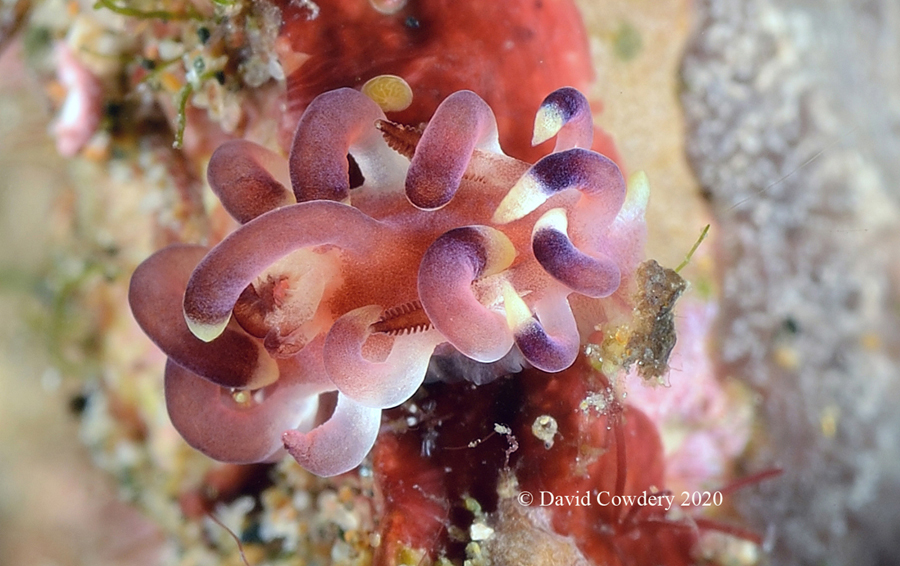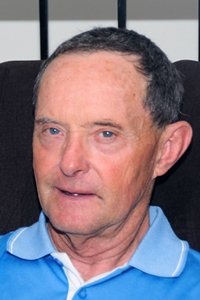 |
Image courtesy of David Cowdery
Balanoi dive site in Anilao, Batangas, Philippines
|
Image courtesy of David Cowdery Balanoi dive site in Anilao, Batangas, Philippines  |
Okenia kendi Gosliner, 2004
This is a good example why identifying species from photos can be misleading. When David and Mike Miller originally sent this critter to me, Mike suggested Phyllodesmium magnum, feeling it was similar to the photo of a juvenile P. magnum, shown on page 316 of NSSI 2nd Edition. I had to agree at first as the colors did match David's photo. But then the truth revealed itself - it has a posterior dorsal gill. Ah ha - a dorid, not an aeolid, in fact an Okenia. This is a reasonable mistake made often with Okenia's, due to their lateral appendages which look like aeolid cerata. Like so many species, juveniles often look quite different from adults. Look at the differences shown on page 316 of NSSI 2nd Edition - huge. They don't look like the same species at all. This is why when researchers like Terry Gosliner describe a new species they attempt to examine the internal morphology and conduct genetic sequencing on all sizes of critters. It was a real surprise when Terry learned that these two color forms were in fact the same species. In this species, the key characteristic shared by both juvenile and adult is that the slender lateral appendages are white at the base turning to brown distally. Don't let body parts like lateral appendages foul you. Look closer. You may be in the wrong clade. As it turns out, Bill Rudman had an opportunity to render an opinion on a similar specimen from East Timor back in 2008 and concluded at that time that color variation in Okenia kendi was a very real possibility!
|
Gosliner, T. M. (2004) Phylogenetic Systematics of Okenia, Sakishimaia, Hopkinsiella and Hopkinsia (Nudibranchia: Goniodorididae) with descriptions of new species from the tropical Indo-Pacific. Proceedings of the California Academy of Sciences, 55: 125-161
Dave Behrens
Sammamish, WA 98074
Aug., 2020
Send Dave Behrens email at davidwbehrens@gmail.com

Dave Cowdery is a retired bio-medical Engineer and is the inventor of the Alumina/Titanium hermetic feedthrough (1970) for implantable bionics and the first to introduce a Titanium casing. This invention created the first bionic implant (pacemaker) with a service life that could be measured in years rather than months and is the basis for todays huge multi billion dollar bionic industry. David is a Divemaster with over 5,500 dives experience and is based near Byron Bay in Australia. David is also a keen competitive road bicycle rider covering over 400 km most weeks. Photographic equipment used Nikon D800 camera with DS160 substrobes.
Send Dave mail at divec@ozemail.com.au
|

Attention all you Sluggers, and you know who you are! The NSSI 2nd edition is now available in ebook PDF and book form . The hard back version will become available Nov. 1st. Both will cost $65 (individually). You will need to jump through a few hoops to get the electronic version as pdf distribution is protected by Adobe ID!! Please read the following to enable reading your electronic purchase! This new 2nd Edition is updated and reorganized, including 185 new species. Among other features, the new edition includes additional photographs of species, an identification key, and an up-to-date classification reflecting the latest evolutionary relationships. The Indo-Pacific represents the largest expanse of tropical ocean in the world, stretching from the Indian Ocean coast of southern Africa and the Red Sea to the central Pacific of the Hawaiian Islands, Easter Island and the Marquesas. This region supports the most diverse marine fauna of any place in the world for most groups of marine organisms. The nudibranchs and sea slugs are no exception to this rule; there are about 3,000 described species of these organisms in the world and at least 40% of these have been found exclusively in the Indo-Pacific tropics. This book illustrates 2,138 Indo-Pacific nudibranchs and sea slugs, including many undescribed species.
|

|
